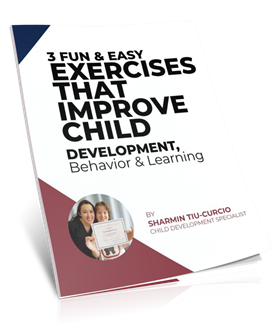It is common to see an autistic child having a tantrum or meltdown. Parents find it challenging to make them feel better.
 Parents resort to trying different methods, but none seems to work. Meltdown and tantrum behavior seemed to last such a long time. Most experienced confusion on what to do and as to what might have triggered it. Most of the time, these behaviors come unexpectedly.
Parents resort to trying different methods, but none seems to work. Meltdown and tantrum behavior seemed to last such a long time. Most experienced confusion on what to do and as to what might have triggered it. Most of the time, these behaviors come unexpectedly.
Having been able to work with children on the spectrum, I use different ways and strategies to help calm a child, therefore, helping parents handle the situation better whenever their child is experiencing a meltdown. Most people think that whenever a child is experiencing one of these episodes, they are all treated the same way.
There are a number of things that can trigger an outburst such as: changes in their environment that they are in or is used to; changes in their routine; the child not getting what they want or need; the child is not feeling well. We have to remember that an autistic child perceives things differently from us, and so they react and cope other than usual, therefore, the lashing out, screaming, etc.
Meltdown is when the child is having an overload from the stimulation in the environment such as too much sound or noise, or changes in his/her routine, that causes stress, anxiety and the child is having a hard time coping. Distinguishing these can be challenging, especially to non-verbal autistic children. Because of the inability to communicate and difficulty expressing themselves, they get frustrated and may lash out.
With a tantrum, when a child is given what he wants, the child will calm down. For example, if the child is throwing a tantrum because he is hungry, when given food, the behavior then ceases.
Here are some strategies that might help prevent a meltdown or help your child calm down.
- Have frequent breaks when your child is doing an activity. If the child can only tolerate an activity for 5 minutes, then start with this. Choose an activity that can be completed in a very short amount of time and is fun. If the child seems to be getting overworked or getting frustrated, you can stop the activity and do something else. On the other hand, when the child enjoys an activity too much such as playing a game, he will have a fit once stopped. Setting an alarm that signals the end of the game and telling the child ahead of time, will help lessen the stress and meltdown.
- Telling the child of your plan, or changes in your plan ahead of time will help the child cope with the plan. You can tell them a few days or a week before.
- Sticking to a routine will help with the child’s stress and anxiety, and will not have to work too hard to cope.
- You can also have a quiet space, corner or area set up for the child. The space can include calming music or instruments such as lava lamps, soothing lights, or calming colors.
- You can hug your child and place them in a fetal position (sitting with your child hugging their knees), then rocking back and forth in a soothing, rhythmic movement. It calms the child when they feel more secure of their surroundings.
You have to remember that each child is different and does not respond the same way. Since I do not know the specifics of your child’s condition, the above strategies may or may not work for them. The best way to alleviate the problem is to manage the fault lines, which are the imbalances in the child’s body.
If you require a more individualized treatment and a more permanent solution to your child’s difficulties, you can call me at (718) 285-0884 for a free consultation.



